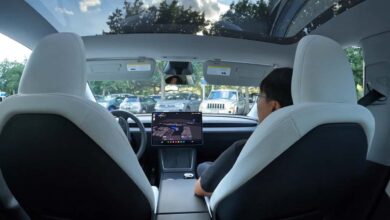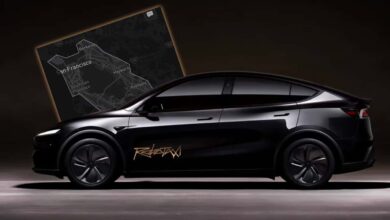The Kia EV4 Ran For 6,200 Miles At The Nurburgring And It Wouldn’t Die

- Kia sent the EV4 to the Nürburgring for a killer torture test.
- After 6,200 miles of flooring it and DC fast charging, the electric sedan just wouldn’t die.
- After the equivalent of 160,000 miles, the battery’s State of Health was still at 95%.
Hyundai and Kia got a bad rap for reliability in the ’90s that both brands have been trying to break out of for decades. One of the ways that they’ve been doing this is by stress testing the absolute life out of their cars, especially new vehicle platforms like the new 2026 Kia EV4.
To see how well it would perform under the absolute worst of the worst conditions, Kia decided to push the EV4 to the limits by subjecting the little electric car to 68,000 miles of agony, including an unnecessarily aggressive (and also gloriously deranged) 6,200-mile battery torture test on the mighty Nürburgring Nordschleife.
And you know what? It just wouldn’t die.

Photo by: Kia
This massive slog around the green hell wasn’t meant to be a gauge of an economy car’s lap time ’round the ‘Ring. Instead, it was a test to see how well the EV4’s battery would hold up to a very excruciating test meant to identify any weaknesses or failure points in the engineering. That means electrical, mechanical and thermal tests were stressed to the max as the car zipped around the track.
This wasn’t just some economy highway speed run, either. Kia’s engineers specifically ran the sedan between 90 and 95% power output for the entirety of the test. That’s kind of insane, because just think about how much stress you put on your entire vehicle by practically flooring your car for 6,200 miles straight. Drivetrain components are under constant load, springs are sprung and suspension components are working overtime to handle higher speeds.
Between each run, the car was subjected to “hypercharging” (likely referring to the new 150 kW fast N Charging Station that it just installed at the Nürburgring), meaning not only was the car tortured by outputting power at a high rate, but its 400-volt battery architecture was also fast charged to oblivion.

Photo by: Kia
So what makes this so impressive?
Well, after the full 74,200 miles of testing—that includes the 68,000 miles of pure road tests and the 6,200 miles of Nürburgring terror—Kia says that the little EV4’s battery was still at a whopping 95% state of health.
The automaker says that this is likely a “light” number, too, as the 6,200-mile test was equivalent to around 93,205 miles of “customer conditions” (meaning that for every one mile a Kia EV drives at 90-95% of power output, it’s the equivalent of around 15 miles of normal commuting. So think of this more like a test of more than 160,000 miles.
Now, it’s worth noting here that battery abuse isn’t the only thing that causes degradation. In fact, battery age is one of the quickest contributing factors to battery health, especially in a Lithium Ion Phosphate (LFP) pack. So the figure you’re seeing from Kia doesn’t really take into account long-term degradation over the length of ownership. Still, it’s impressive nonetheless.
The good news here is that Kia is really showing the world that EVs aren’t just disposable cars. These battery-powered machines are rated for some serious abuse, and with fewer moving parts than gas cars, it means less overall maintenance for owners who keep their cars for a long time. In fact, that’s why it guarantees that the EV4 will retain at least 70% of its battery capacity after 100,000 miles or eight years.
Let’s be real. The EV4 will be a hit for Kia, even if it won’t have the EV tax credit to back it up and is impacted by tariffs. The car boasts up to 391 miles of range (on Europe’s WLTP cycle) and an anticipated starting price tag of just $39,000 in the U.S.
Now, couple that with a battery that will stand up to even the most heavy-footed, DC-fast-charging drivers out there? Sold.
Source link


